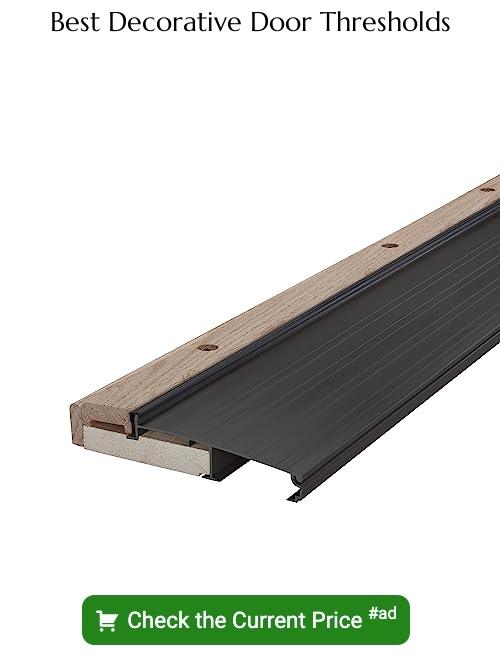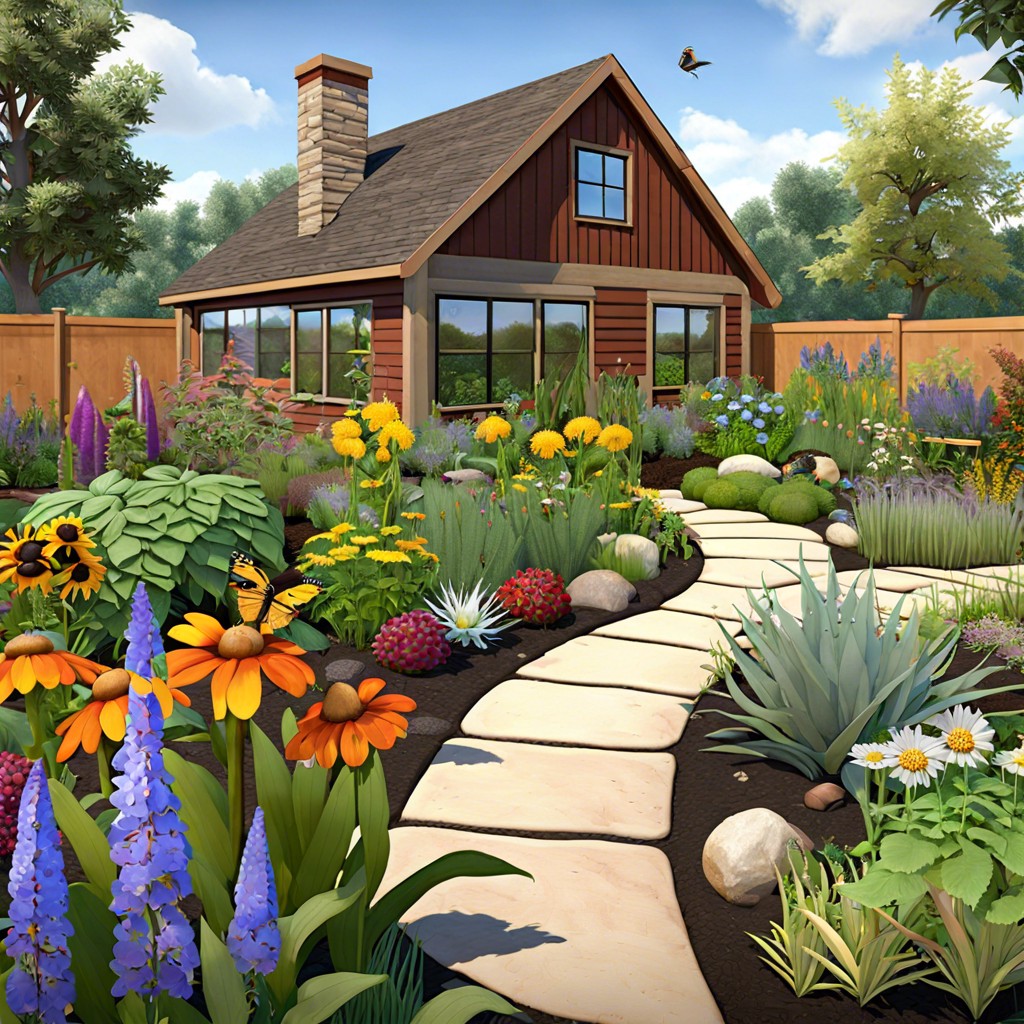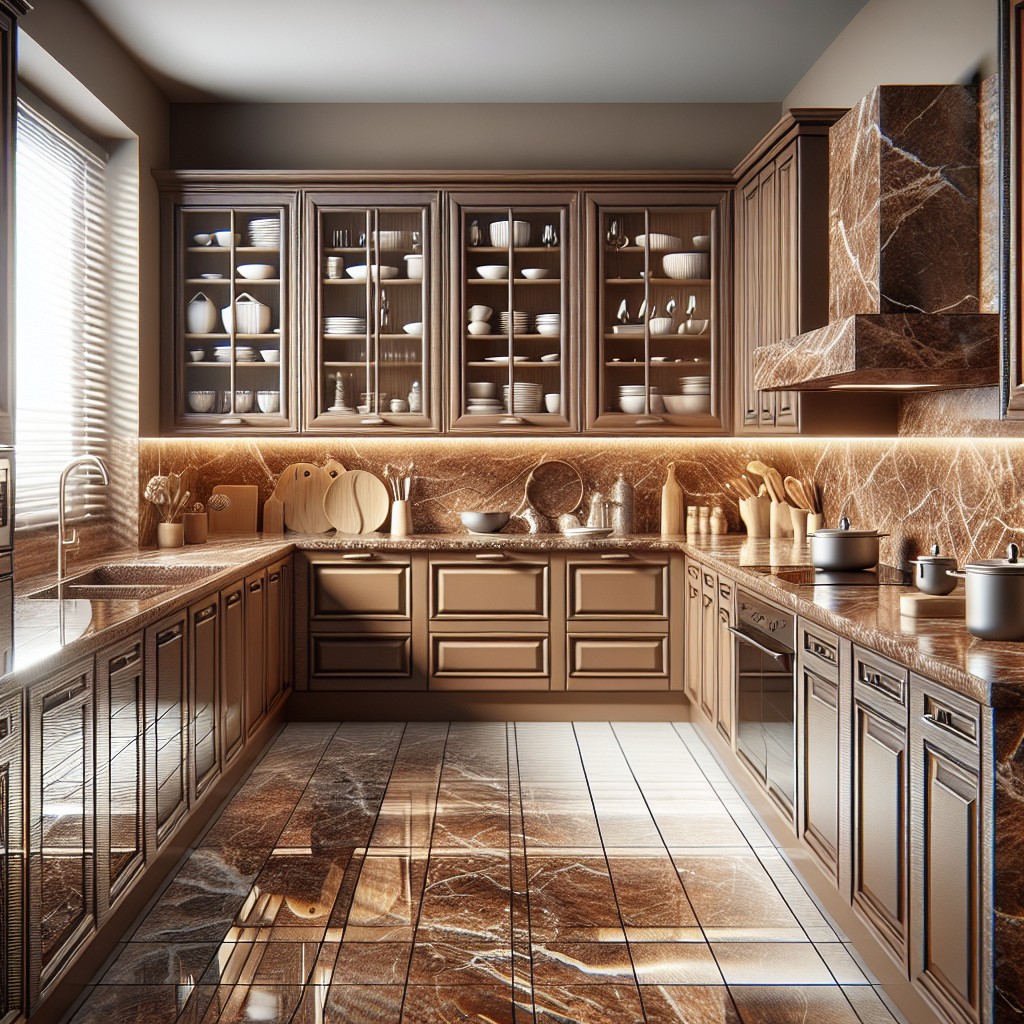Last updated on
Discover innovative ways to create alluring thresholds because they are the keystone to harmonizing different room designs, enhancing aesthetics, and ensuring the effective transition from one space to another.
I, as the author and designer of this article on 20 Unique & Creative Threshold Ideas, passionately hope you find as much inspiration and joy in my creations as I did while crafting them.
Thresholds, or transitions, between rooms can be a challenge, but they also offer an opportunity for creativity. Whether you’re dealing with different flooring materials, changes in floor levels, or simply want to define spaces, there are numerous innovative ideas to explore.
From sleek metal strips to custom wooden designs, and even subtle changes in tile patterns, the options are endless. This article will delve into a variety of threshold ideas, providing details on material choices, installation methods, and design aesthetics.
So, whether you’re renovating or building a new home, you’ll find a solution that seamlessly connects your rooms while adding a touch of style and sophistication.
What's Inside
Wooden Plank Threshold
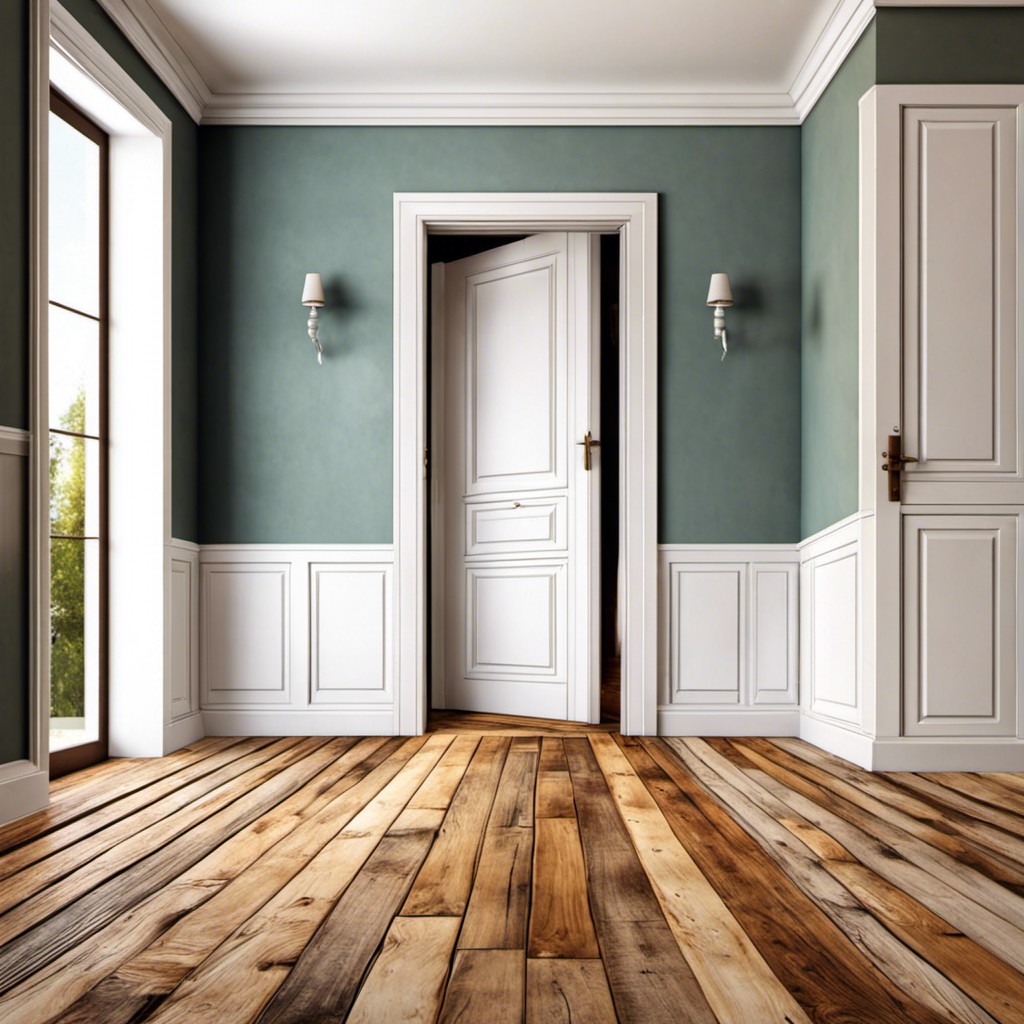
Selected for its natural appeal and versatility, a wooden plank can seamlessly blend two rooms together, creating a warm and inviting transition. This threshold option works particularly well in rustic or farmhouse interior styles.
It’s important to select the right wood type for longevity and aesthetic compatibility with both rooms. Options range from the light tones of oak, the rich and homely hues of cherry, or the dark and dramatic appeal of walnut.
The installation method can be either flush (leveled with the floor) or overlapping (slightly raised), depending on the flooring types on either side of the threshold. A professional installer can ensure an accurate fit, particularly where the floors are not perfectly level.
Do take note of the surrounding decor and color scheme when choosing the wood stain to ensure visual harmony. To enhance durability, a sealant or finish should be applied, offering protection from spillage and daily wear and tear.
Maintenance is simple – regular sweeping or vacuuming, along with occasional mopping or wood cleaning products, is sufficient to keep the plank threshold looking fresh and lively.
Overall, a wooden plank threshold is a high-quality, inviting option that can beautifully tie together your rooms with a thoughtful touch of nature.
Marble Strip Transition
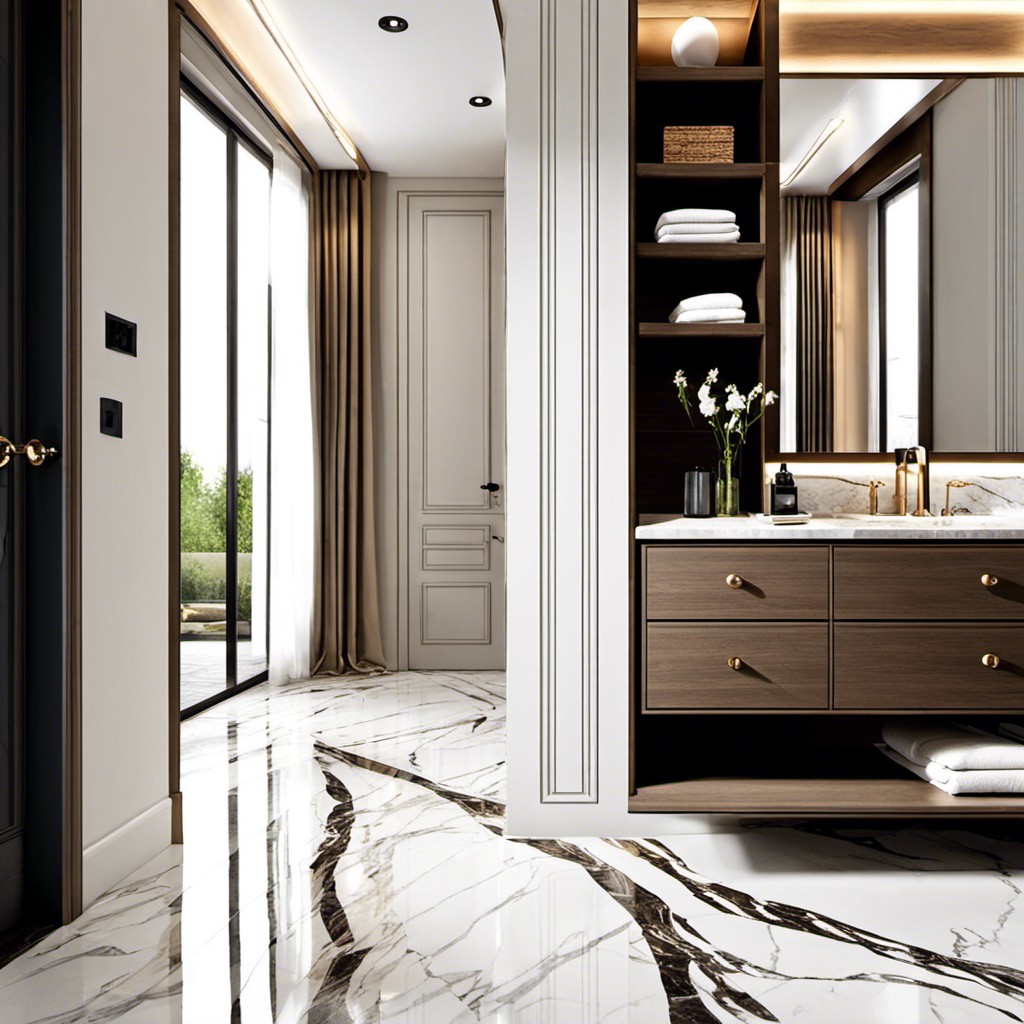
This high-end option gracefully integrates two types of flooring. It comes in different colors, from pure white to inky black, suiting any décor style. It’s all about class with marble—it denotes an upscale aesthetic.
You can either match the marble to one or both of your floors, or let it stand as a design feature itself. Install it flush with higher flooring for a seamless appeal, or allow it to rise slightly above a lower floor level, creating an almost subliminal note of luxury.
Easy to clean, durable, and robust, marble strip transitions defy the footsteps of time. Their polished finish reflects light wonderfully, adding brightness and a sense of spaciousness to rooms. Their cool nature underfoot sabrings a refreshing compositional contrast against warmer flooring types like wood or carpet.
Remember, marble has a tendency to be slippery when wet, so it might not be the best choice for wet areas like bathrooms or kitchen transitions. Make sure to prioritize safety alongside style where necessary. Use marble strip transitions strategically to strike an ideal balance between practicality and visual appeal.
Mosaic Tile Divider

Featuring diverse colors and patterns, mosaic tiles add an artistic flair to any room transition. They can be tailored to mirror the colors and styles of the adjoining spaces, ensuring seamless integration and a harmonious visual flow.
Not only are they easy to install, mosaic tiles also provide durability, easily withstanding high traffic areas in the home. Their non-skid surface offers an added safety feature, preventing slip-and-fall accidents. Also, their flexibility to work across different types of flooring – whether it’s a carpet to tile or wood to stone transition, makes mosaic tile dividers a popular choice for many homeowners.
It’s key to remember that maintenance requires regular grout cleaning to preserve their beauty. Overall, mosaic tile dividers balance both the aesthetics, safety and practical aspects of indoor design.
Glass Bead Divider

Incorporating miniature works of art underfoot, the glass beads strike an opulent note to any transition. Their translucency aids in merging the two spaces subtly, making them an extravagant yet tasteful choice.
Characterized by its sparkle and diversity in colors and shapes, these dividers can transform into a design hallmark in your home. From simple, monochromatic beads to intricate, multi-hued mosaic styles, the aesthetic possibilities are endless.
Installation involves setting the beads in a bed of adhesive grout, ensuring durability and long-lasting beauty. The ease of cleaning and low maintenance these offer further enhances their attractiveness.
For those with an eco-conscious approach, recycled glass beads serve as an excellent sustainable choice, minimizing environmental impact without compromising on style.
While undoubtedly upscale, be mindful of practicality – these may not be advisable for high-traffic areas or spaces needing frequent heavy-duty cleaning. A comfortable middle ground can be achieved by using it sparingly in select areas or as accents.
Decorative Metal Transition
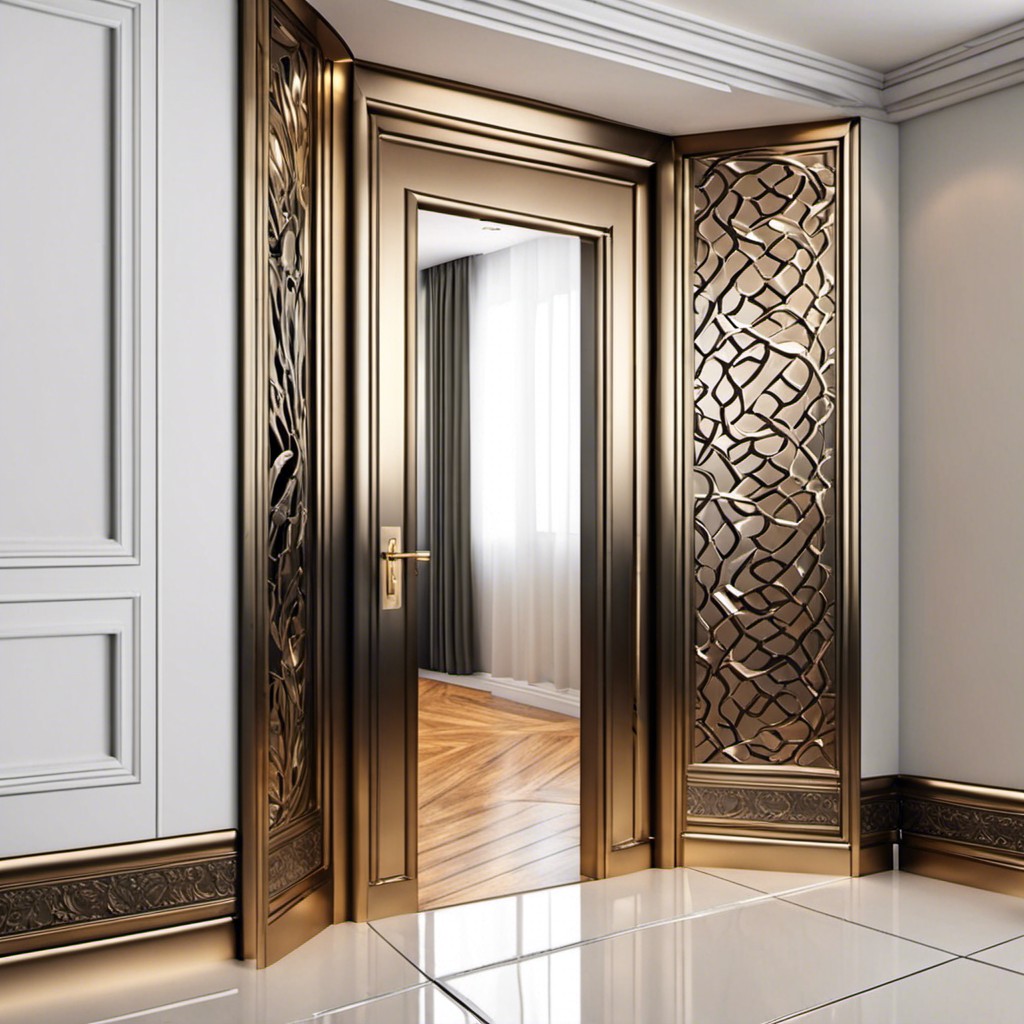
Forging from the versatility of metals, such transitions can lend oomativity and functionality with the least effort. This style often provides a clean, shiny appearance that complements contemporary, industrial, or even classic decor.
For those wanting to introduce an air of elegance, a brass transition strip can be just the ticket. It retains its luster over time and add a warm glow.
If the rooms carry different hues, a metal strip with a neutral finish like stainless steel or nickel can seamlessly bridge the gap. These are also exceptionally durable, resisting wear and chipping even in high-traffic areas.
Copper transitions, with their rich patina, can add an earthy charm. This naturally aging metal evolves over time, adding a dynamic visual element to your space.
Remember, while metal transition strips may require professional installation for proper fitting, their longevity and low maintenance make them a worthwhile investment.
Stone Pebble Divider
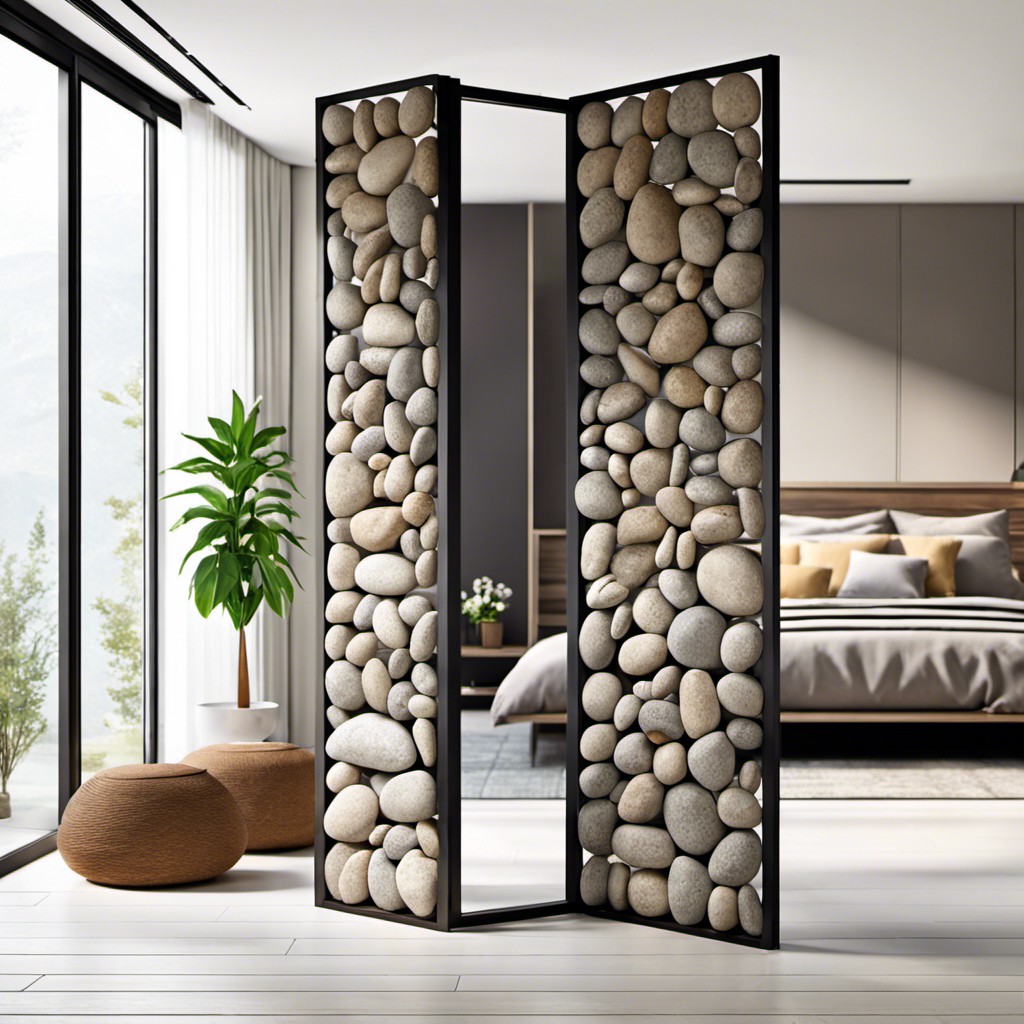
Providing an organic and natural boundary, a stone pebble divider brings the charm of outdoor elements indoors. Stones or pebbles can be arranged in a narrow, grouted strip between rooms to create a visually engaging division. Aside from the immediate aesthetic appeal, it lends a tactile variance underfoot and complements both rustic and high-end design.
One appealing factor is the variety of pebbles available based on color, size, and texture – making each threshold unique. It’s a relatively simple DIY activity, which can make the exercise both cost-effective and personally rewarding. Maintenance is generally easy – requiring regular vacuuming and an occasional reseal, depending on the stone’s porosity.
Bear in mind, the pebble dividers have an uneven surface, a feature that can be both intriguing and potentially hazardous for those with mobility issues or if placed in high-traffic areas. It’s essential to carefully consider its placement for optimal impact and functionality.
Remember to maintain the color harmony between the choice of pebbles and the flooring of both rooms, ensuring the design cohesion throughout your home.
Rug or Carpet Threshold
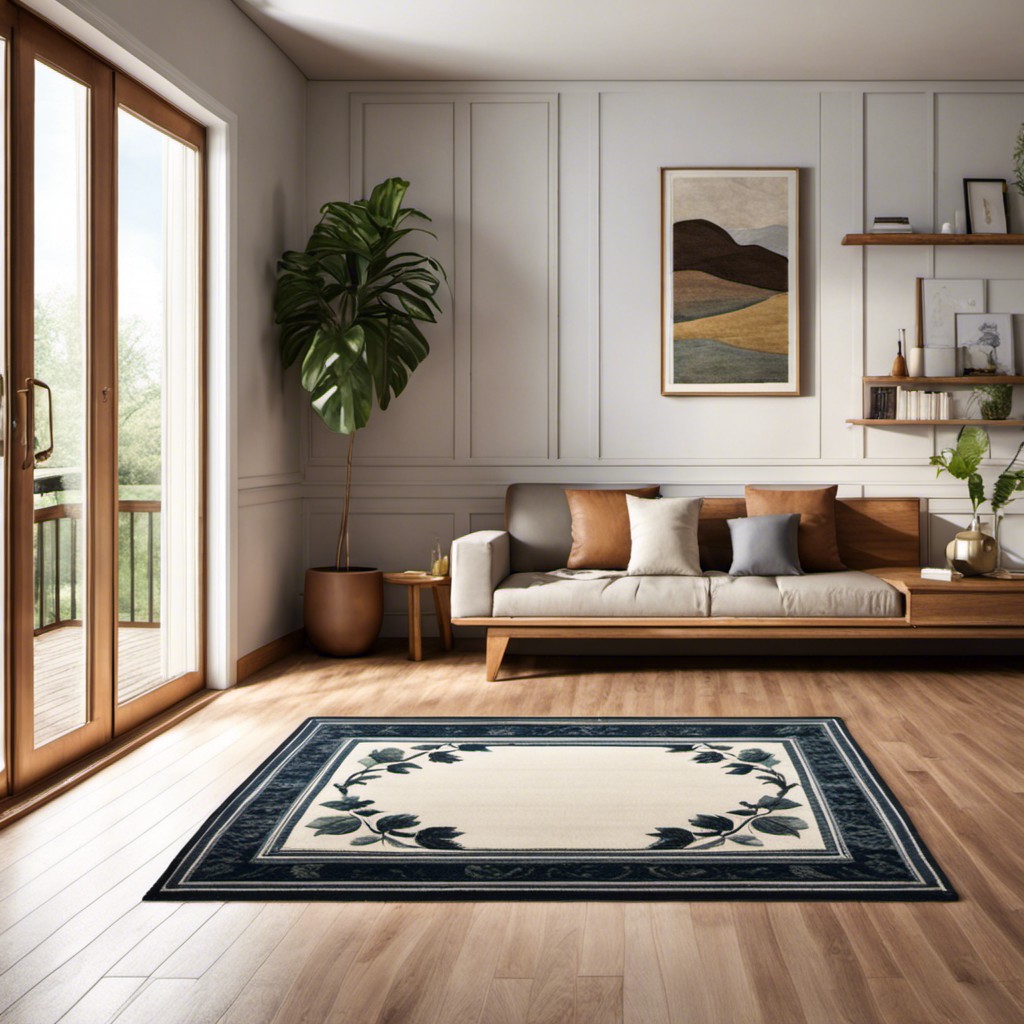
A fresh idea is to integrate a rug or carpet as a threshold, creating a warm and inviting barrier between rooms. Here are some key considerations:
1. Material Choice: From sumptuous wool to durable synthetics, there’s a wide variety of rug materials. Pick one that complements both rooms.
2. Color and Pattern: The rug’s hue and design can either accent or blend with your overall decor. Find a balance for visual harmony.
3. Size: Ensure the rug covers the entire threshold area. Dimensions could range from narrow hallway runners to expansive area rugs.
4. Placement: Although traditionally centered, experiment with off-center or diagonal placements.
5. Maintenance: Remember, highly trafficked thresholds require easy-to-clean, durable rugs.
Remember, a rug threshold should embody both functionality and style.
Multi-level Flooring Transition
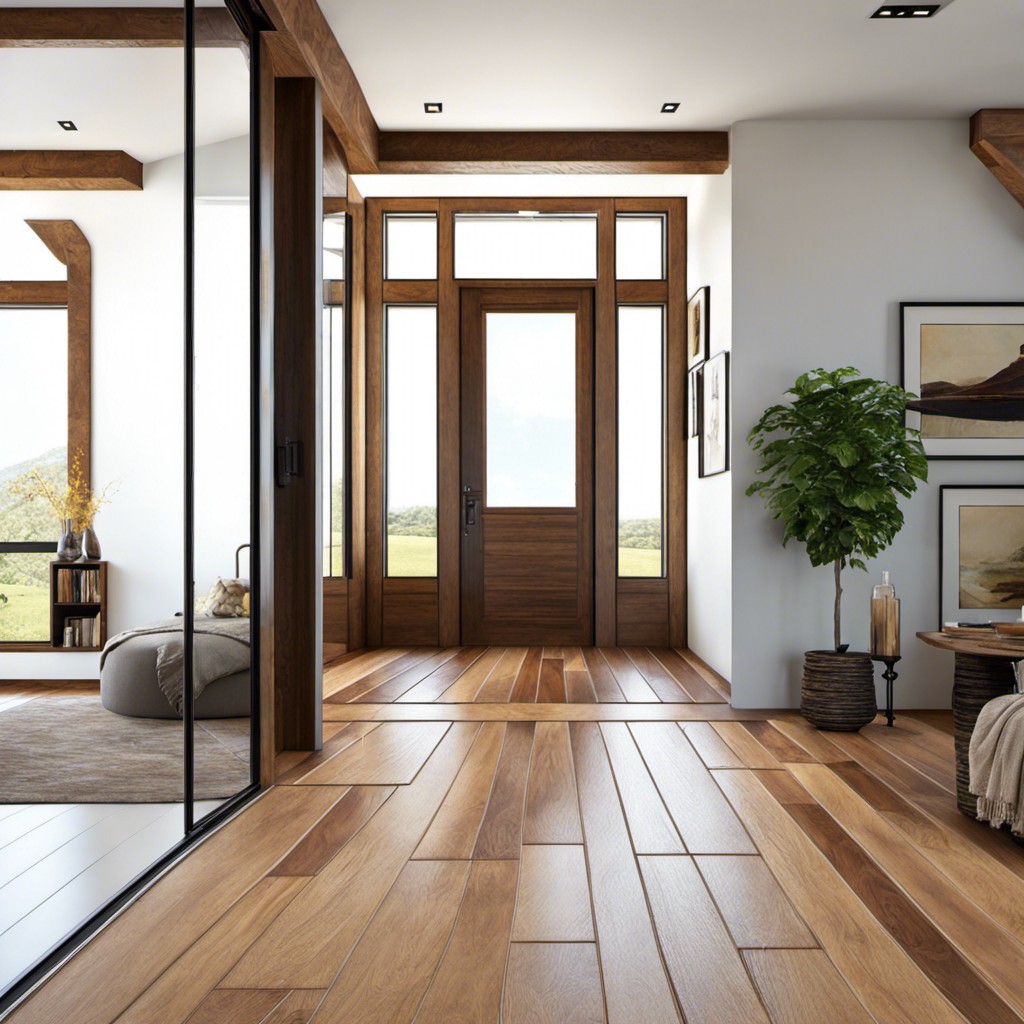
Transitioning from one floor level to another can be a striking design feature. This option offers a visual demarcation between rooms while adding a touch of architectural intrigue. Here are a few concepts crucial to a multi-level flooring transition:
1. Different Materials: Your selection could range from wood to tile, or even blend carpet with concrete. Diversifying materials results in a dramatic highlight at the step-up or step-down.
2. Level Difference: The height difference can be as subtle or pronounced as you’d like. A minor elevation can gently distinguish rooms, while a more prominent drop can bring an impactful difference.
3. Safety Considerations: It’s crucial to ensure surfaces aren’t too steep or slippery. Installing handrails or using texture surfaces aids in preventing stumbles and slips.
4. Lighting Enhancements: Adding a soft glow under the steps or using inbuilt lights along the edge can accentuate the multi-level transition.
With these factors in mind, multi-level flooring transitions can become a feature point of your home, differentiating spaces without obstructing flow.
A Step With LED Lights
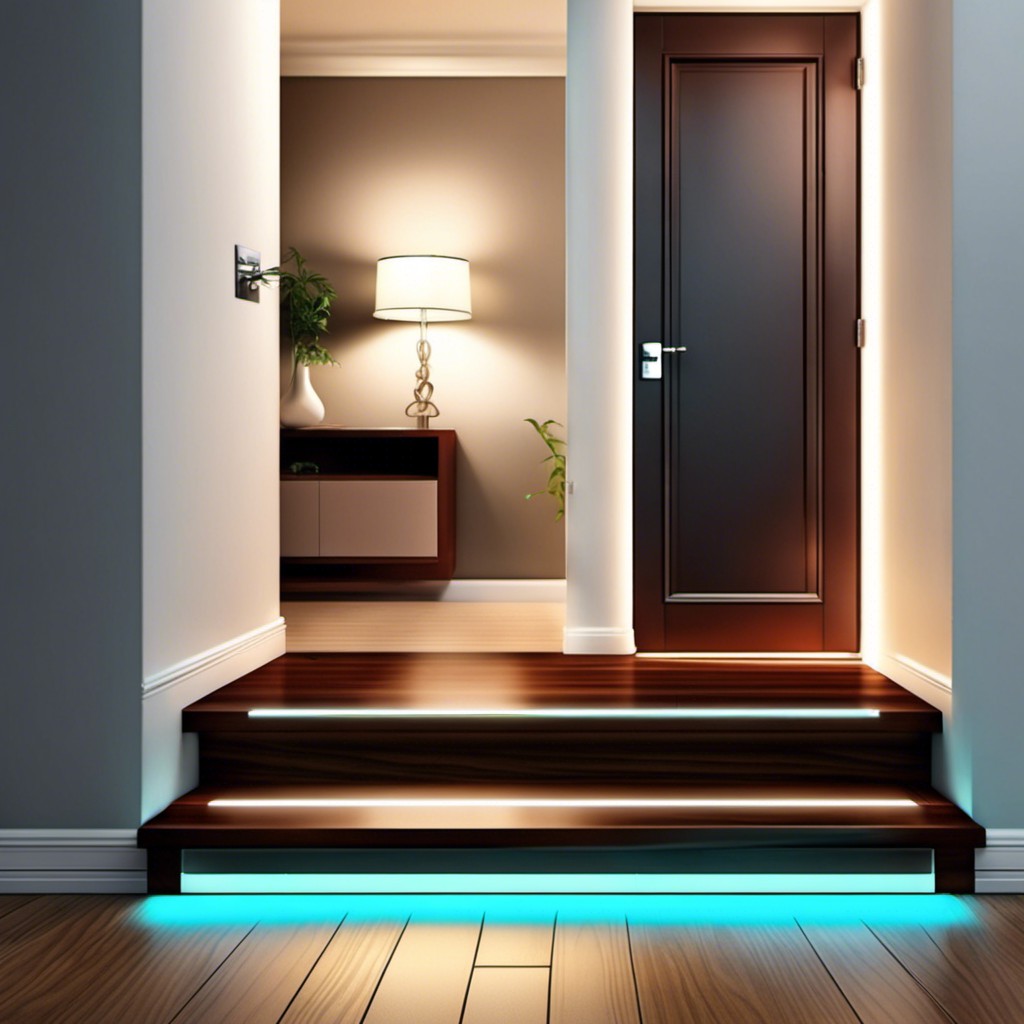
Implementing this modern approach not only adds an intriguing visual element but also enhances safety in low-light conditions. LED lights under the step can cast a gentle and relaxing glow, adding depth and character to your room while subtly guiding the way from one area to another.
Depending on your preferences, you may opt for a single color or a rainbow spectrum that can be adjusted for brightness and hue. This design can be especially effective in minimalist or contemporary homes, where sleek lines and innovative lighting configurations serve to highlight the architectural features.
An additional utility is energy efficiency, since LEDs consume less power than traditional lighting options.
Natural Stone Border

Harnessing the robust nature of natural stone, it provides a visually appealing and durable solution for a room transition. It’s generally easy to install, requiring only an adhesive and the stone of choice.
These can range from slate, granite, or quartz, to suit personal taste and match the design themes of adjacent spaces.
Consider the tone and texture when choosing natural stone as it can impact the overall ambiance. For example, rough-textured stones, such as slate, bring an organic rustic touch. Meanwhile, smooth stones like quartz impart a sleek, modern vibe.
Natural stone requires regular maintenance and sealing to prevent staining, especially in high-traffic areas.
Flexible design options include a straight line divide or a more organic, uneven transition for an intriguing visual effect.
Sometimes, experts recommend using a professional for installation to ensure optimal fit and finish. A well-executed natural stone border can genuinely enhance the flow between rooms while contributing to the overall aesthetics and value of the home.
Mirror Strip Threshold
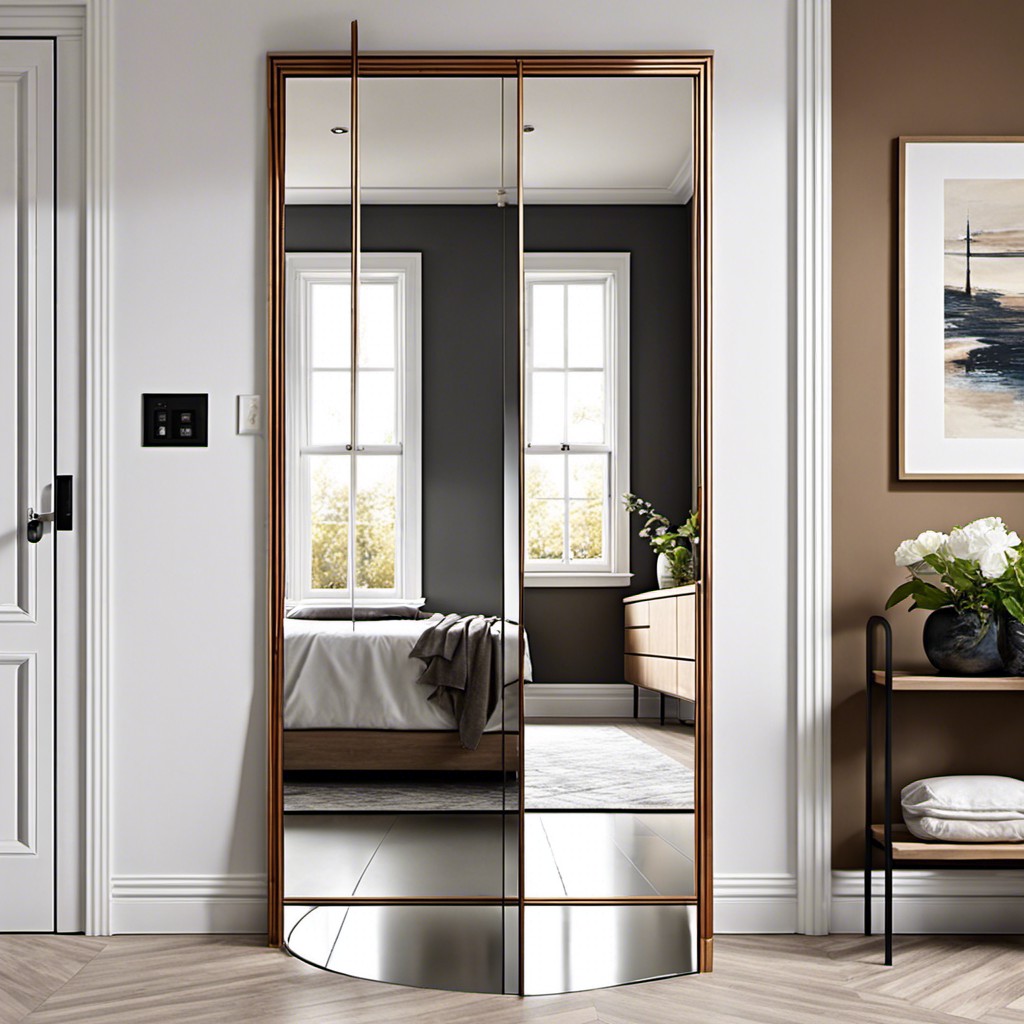
Creating a unique visual appeal, the reflective properties of mirror strips serve to both delineate space and enhance room brightness.
This striking choice makes a smaller space appear larger by bouncing light around the room.
To maintain their sparkle, frequent cleaning is required.
However, mindful placement away from high-foot traffic can reduce the risk of damage and maintain its decorative effect.
For superior aesthetics and more resilient choice, consider bevelling or framing the mirror strips.
With such careful design tweaks, your mirror strip can be a stunning yet practical threshold.
Cork Flooring Transition
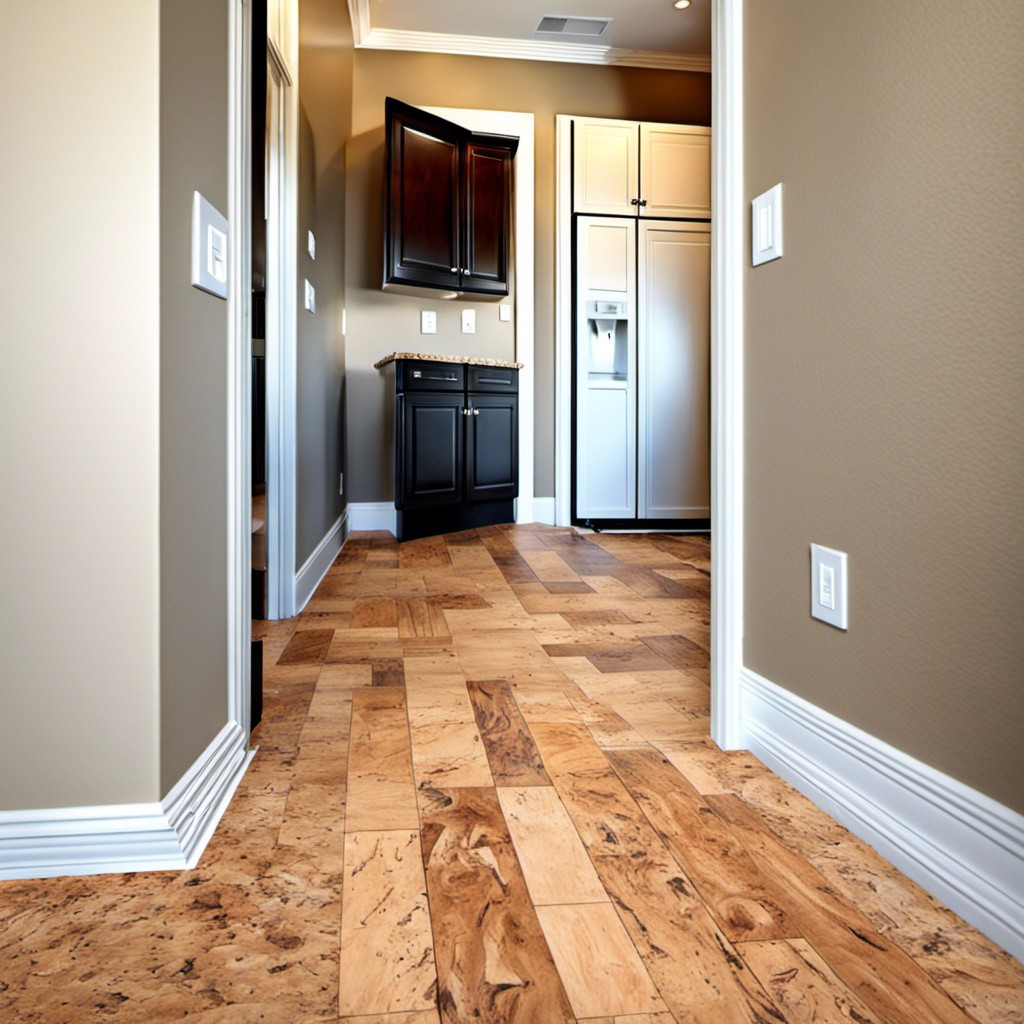
Lightweight and eco-friendly, cork serves as an impressive transition material between rooms. Beyond its natural aesthetics, it presents several practical features that can elevate the ambience of your homes.
First, cork is inherently shock-absorbent and soft underfoot. This makes it perfect for areas with high traffic, or kids’ rooms, reducing the noise and impact of footfalls.
Second, it provides a level of thermal insulation. During colder months, cork can help rooms retain heat, making it a cost-effective choice for energy saving.
Finally, with its easy installation process, you can either DIY or hire professionals – one can easily adjust cork strips to fit any doorway width, rendering it a versatile and adaptive option for flooring transitions.
With cork, you get a beautiful merger of form and function that can seamlessly link rooms in your house.
Vinyl Strip Divider
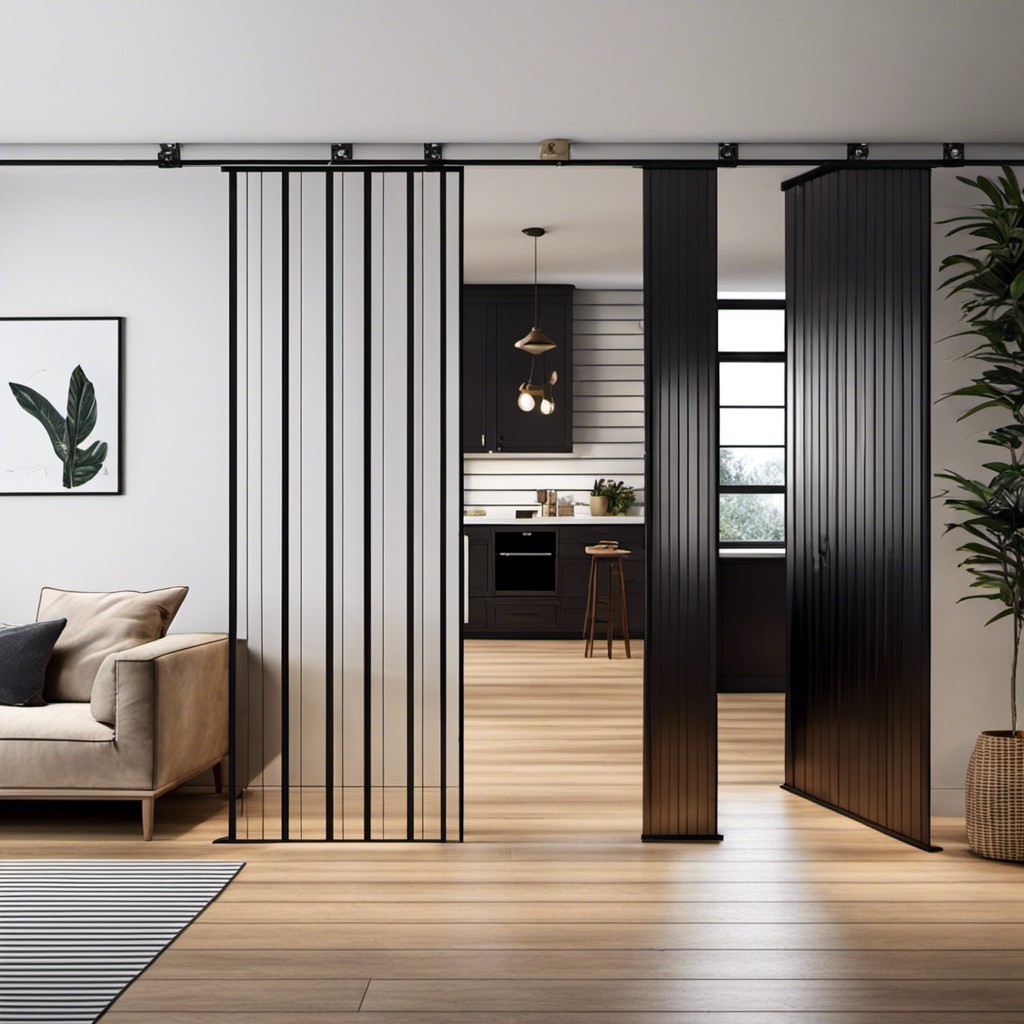
A practical, economical option, the vinyl strip divider provides a sleek, unobtrusive transition between rooms. With its wide range of colors and patterns, it easily matches different flooring styles.
Known for durability and resilience, vinyl strips withstand heavy foot traffic brilliantly, making them ideal for bustling households. Easy to clean and maintain, these dividers also offer water resistance, a plus for kitchen or bathroom transitions.
Despite these strengths, installation requires precision to ensure a snug fit that prevents tripping hazards. A professional touch might be beneficial for perfect alignment. Opt for vinyl strips when looking for a balance of functionality, aesthetics, and affordability.
Woven Straw Mat Transition
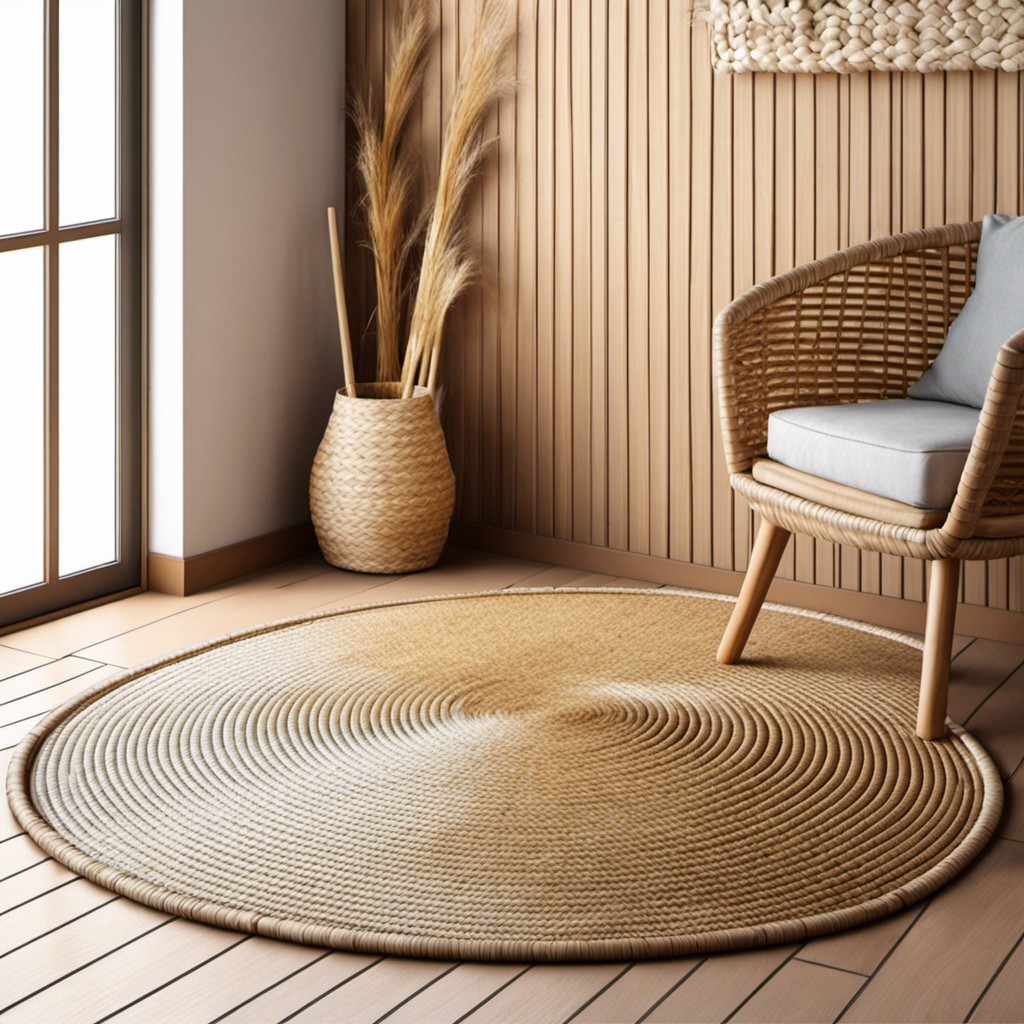
With a nod to traditional methods and sustainable design, this option offers a unique aesthetic fit. Sourced from natural materials, a woven straw mat introduces an earthy, homey feel and can unify multiple floor types effectively.
Besides its visual appeal, this transition solution presents numerous practical benefits.
First, the textural contrast it creates can become a striking design element, helping to visually separate spaces while still allowing a seamless flow.
Second, it is highly durable, making it a perfect fit for high-traffic areas.
Third, straw mats are comfortable underfoot and have excellent noise-reducing properties.
Lastly, given their organic composition, they tend to be hypoallergenic, providing a safe transition surface for those with allergies or sensitivities.
Installation is straightforward, and a variety of weave patterns and straw types offers a wide range of customization options. Match your mat to each room’s design – a rustic weave for boho interiors, a fine weave for modern minimalist spaces – unlocking an exciting opportunity to personalize your space.
Recessed Track for Sliding Doors
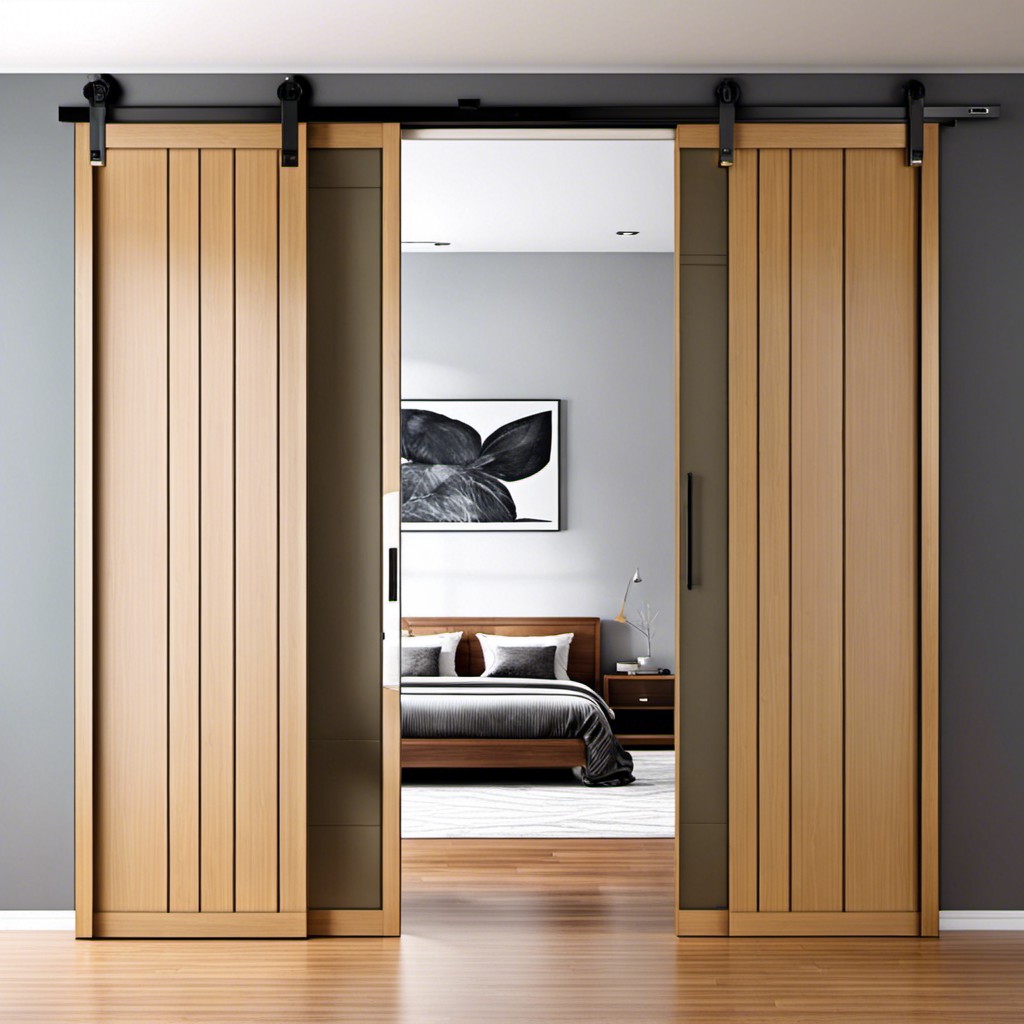
Ideal for seamless transitions between rooms, recessed tracks offer an innovative solution for those keen on maintaining aesthetics with functionality. Widely used for sliding doors, these tracks are concealed in the floor, making them virtually invisible.
1. Recessed track system installation demands precision. It must be embedded into the flooring, offering a smooth guidance for sliding doors.
2. The appeal of this system lies in its subtle integration within the flooring. You’ll need to choose a track that harmonizes with your floor type and the room’s overall design.
3. Maintenance is easy – merely sweeping or vacuum does the trick. If any debris accumulates, it can be gently dislodged with a flat object.
4. However, ensure that your floor supports this type of installation. Consult professionals, as certain floors, like some variants of tiles and hardwood, may pose issues during the installation process.
Remember, a recessed track not only provides practical use but elevates the overall design of your home, creating fluidity and continuity between spaces.
Painted Wood Plank Threshold
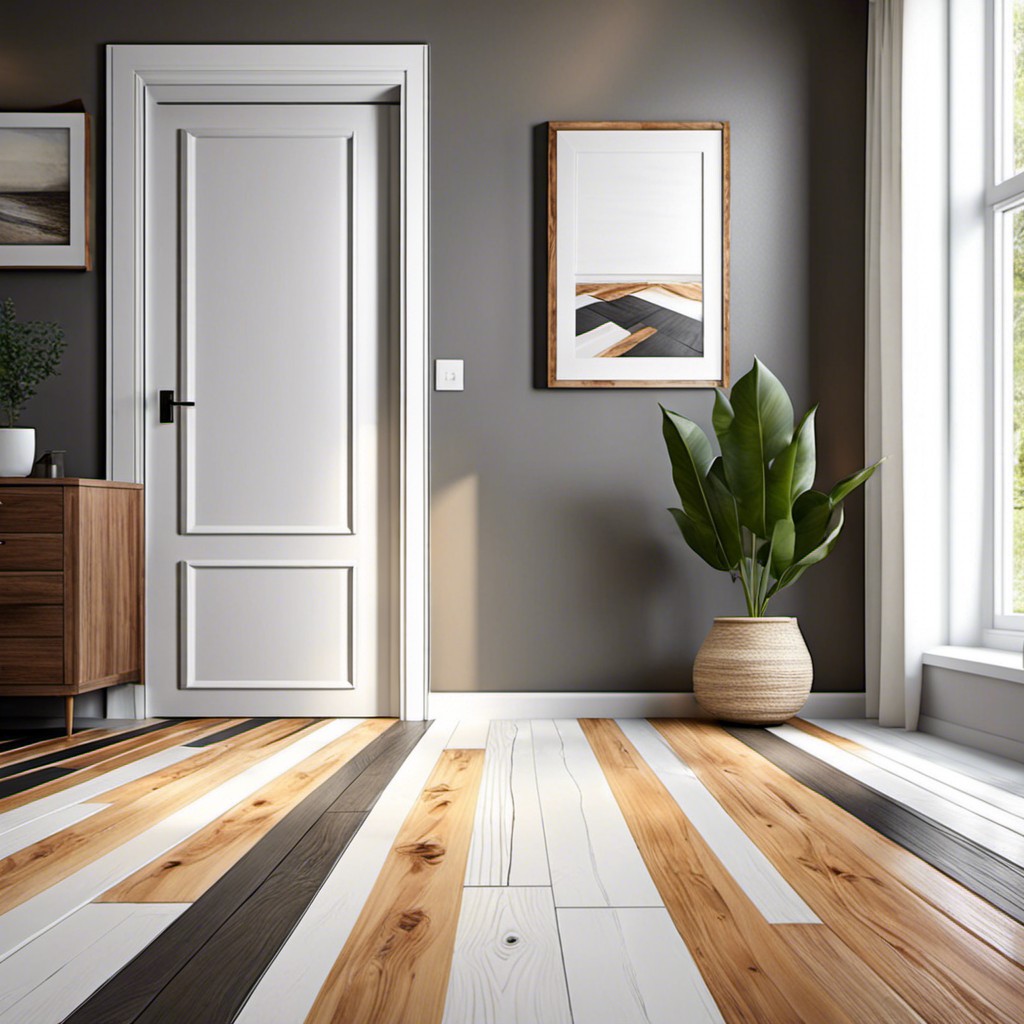
Adding a dash of color to your interior transitions, painted wood plank thresholds are a wonderful way to creatively bridge two rooms. You’re essentially using a simple wood plank, painted to suit your preference or to match with your room’s color palette.
1. Versatility: Use any color paint and wood type.
2. Customization: Choose a pattern or solid color.
3. Easy Installation: A straightforward process, often requiring only paint, wooden plank, and screws.
4. Affordable: Less expensive than many other threshold methods.
5. Practical: Wood, being a good insulator, provides excellent heat retention.
6. Stylish: Boosts your interior decor by extending room colors.
Remember, for the best result, choose hardwoods such as oak, mahogany, or teak for higher durability and make sure to apply a clear seal for added protection after painting.
Terrazzo Flooring Divider
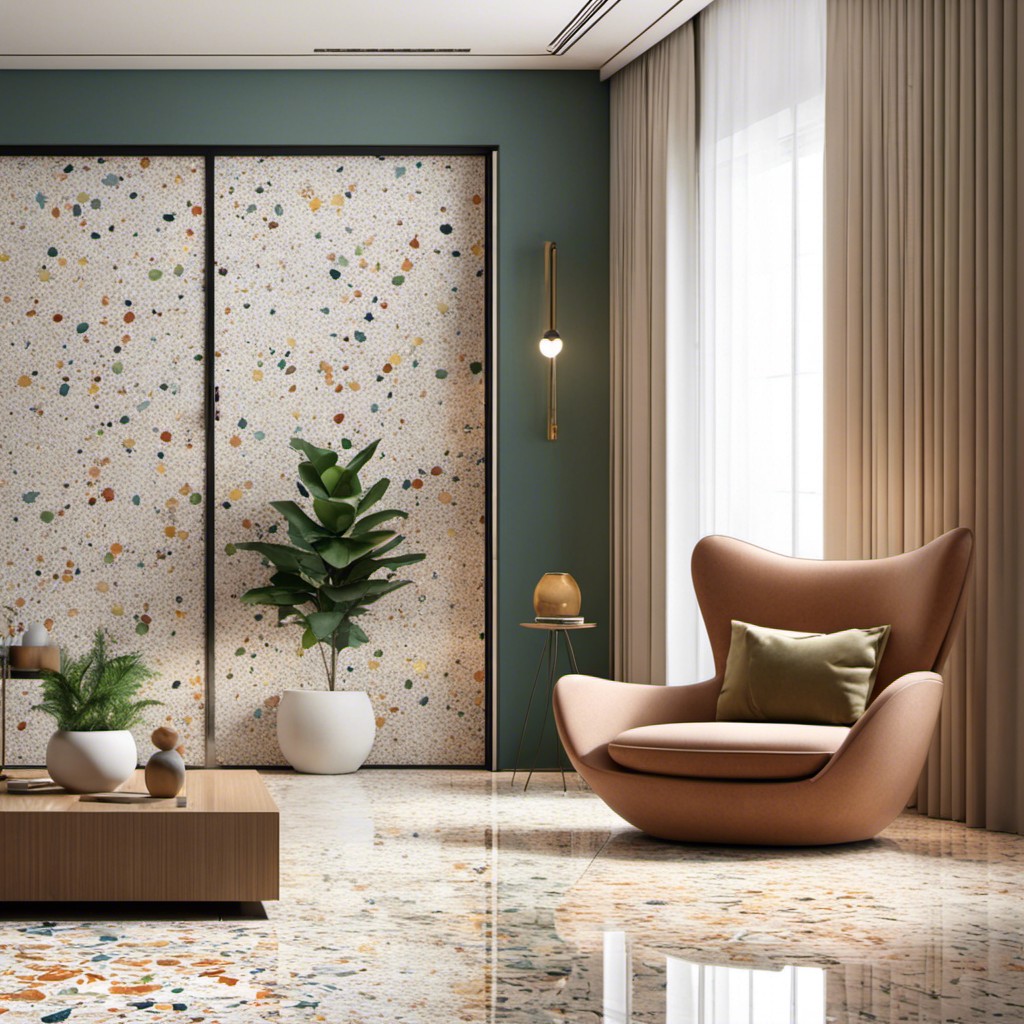
Boasting an array of design possibilities, Terrazzo is more than just a flooring material. When introduced as a divider between rooms, it enhances visual appeal, while offering both durability and practicality.
1. Design Flexibility: Terrazzo is versatile. It’s available in numerous colors and styles, allowing you the freedom to create distinctive patterns and color combinations.
2. Durability: Fabricated from a combination of marble, quartz, granite, glass and other suitable material, Terrazzo is highly resilient to traffic and impact. This makes it a long-lasting solution.
3. Ease of Maintenance: Despite its upscale appearance, Terrazzo requires relatively low maintenance. Regular dusting and periodic polishing keep it looking new.
4. Unique Aesthetic: Incorporating Terrazzo as a room divider adds a premium touch while creating a visually interesting transition space.
5. Eco-friendly: Terrazzo’s composition, often consisting of recycled materials, contributes to more sustainable interior spaces.
In brief, using Terrazzo as a threshold richly contributes to your space’s visual continuity, durability, and overall aesthetic appeal.
Brickwork Threshold
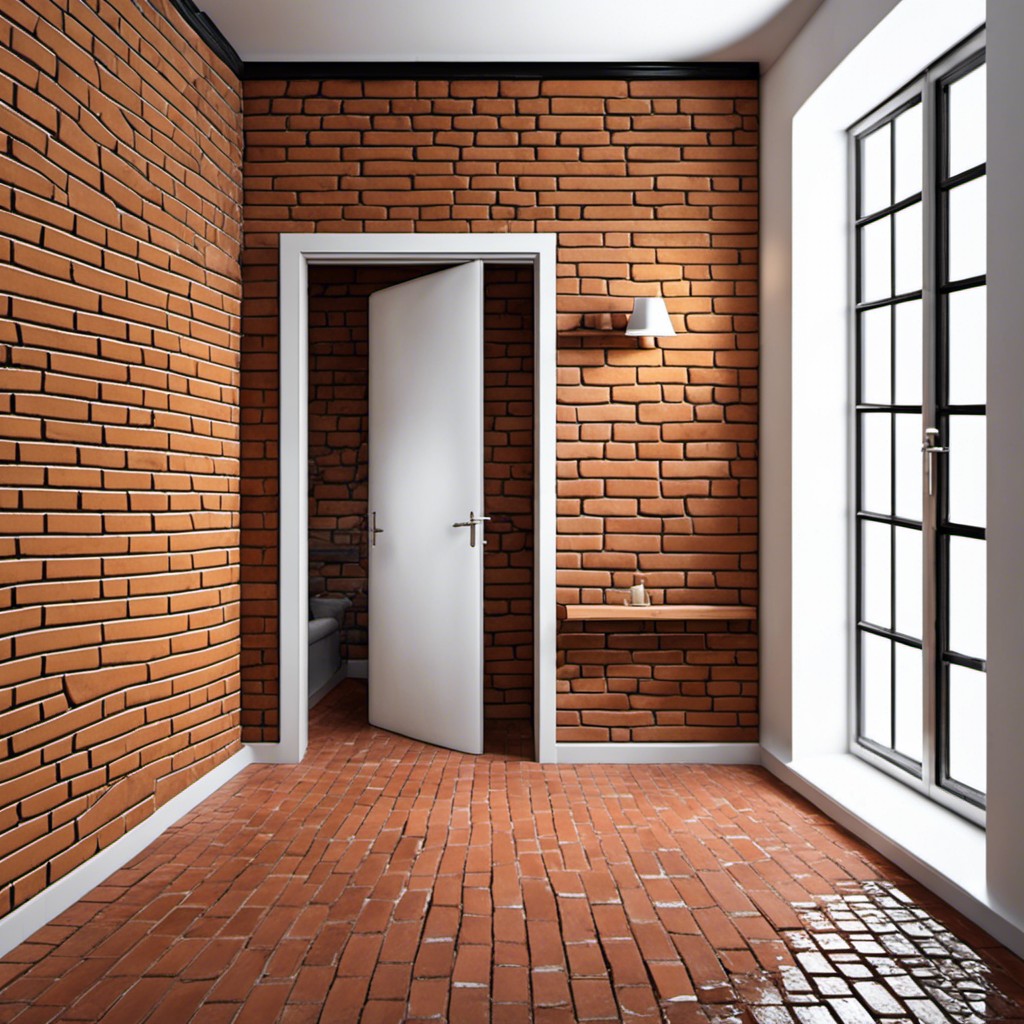
Incorporating brickwork into your interior can lend an appealing industrial touch to your space. By utilizing brick as a threshold, you can create a natural flow from one room to the next. Bricks offer strength and are easy to maintain, ideal for high-traffic areas.
You can lay bricks in a straight line for a traditional appeal or in a herringbone or basketweave pattern for added visual interest. This material is an excellent choice if you’re aiming for a rustic or vintage ambiance.
The thickness and color of your brickwork can be adjusted depending on your preferences and the style of the rest of your home. Brick thresholds can also be stained or painted for a more personalized touch. Remember, sealing is essential for brick thresholds to ensure durability and stain resistance.
For added convenience, consider hiring a professional to ensure proper alignment and spacing, paving the way for seamless transitions between your rooms.
Antique Decorative Tiles

Channeling a bygone era, these gems from the past bring a touch of class and grandeur to your home. They tend to possess elaborate designs that can add an immediate artistic appeal to your space.
Here are some points to note:
- 1. Variety and Versatility: Antique tiles come in many patterns, from intricate florals to bold geometrics. Likewise, they can serve as a subtle nod to an architectural era or assert themselves as focal points.
- 2. Historical Elegance: They infuse an air of sophistication and create unique visual interest, resonating well with both contemporary and traditional design schemes.
- 3. Placement: Though traditionally used in entryways, they are equally suited for kitchens, bathrooms, or fireplace hearths. They can even be incorporated into larger floor designs.
- 4. Maintenance: Highly durable, these tiles will maintain their luster with regular care, such as cleaning with gentle, non-acidic products.
- 5. Customization: While genuine antiques are desirable, there’s also the option of custom tiles designed to mimic the look of coveted eras, providing both flexibility and affordability.
Remember, integrating antique tiles as room thresholds can uplift the overall ambiance, offering a delightful surprise in the unexpected details.
Raised Wooden Beam
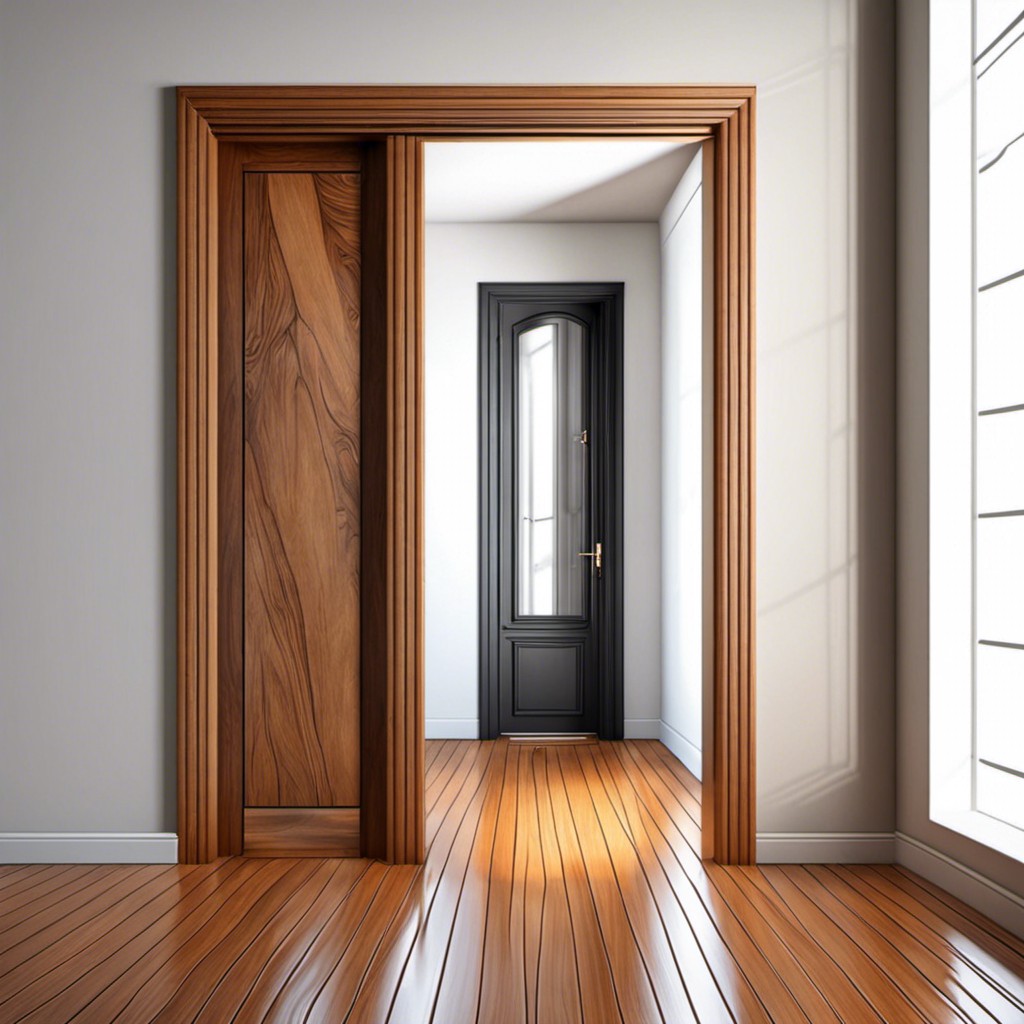
Adding a touch of rustic charm, this method enhances the natural contrast between separate rooms. The beauty of this design is its versatility. Select a wood type and finish that compliments your existing décor, like pine for a light and airy feel or walnut for a rich, warm ambiance.
Installation is straightforward, offering a great DIY project for those inclined. Don’t forget though, it’s essential to coordinate the beam height with the flooring to prevent tripping hazards. A clever trick is to level the top of the beam with the higher flooring, ensuring a smooth transition. Unlike other options, this technique also provides a visual barrier, subtly defining individual spaces.
Despite its simplicity, a raised wooden beam remarkably transforms an ordinary threshold into a striking design feature, achieving a seamless yet defined, transition between rooms.
